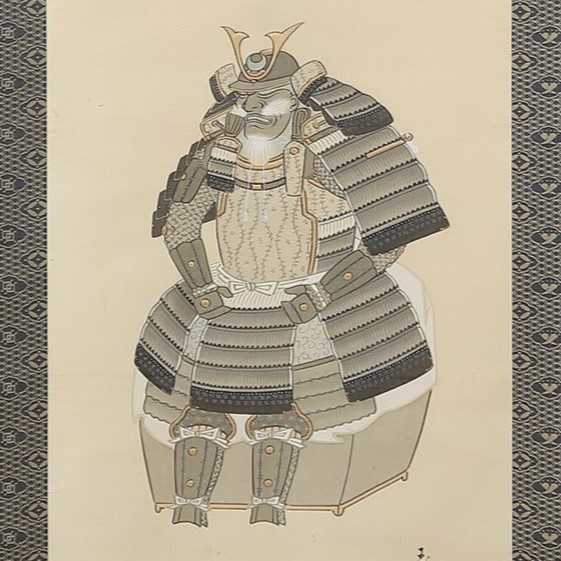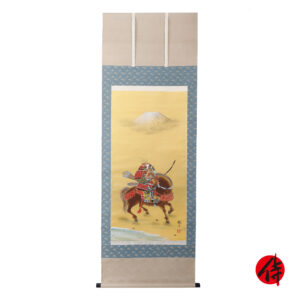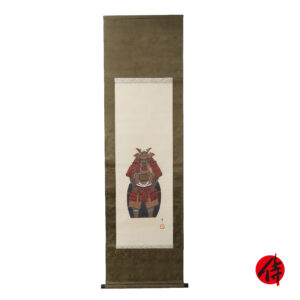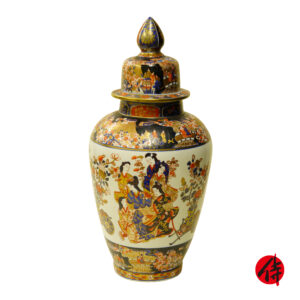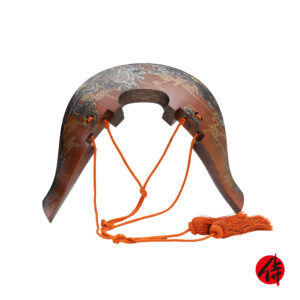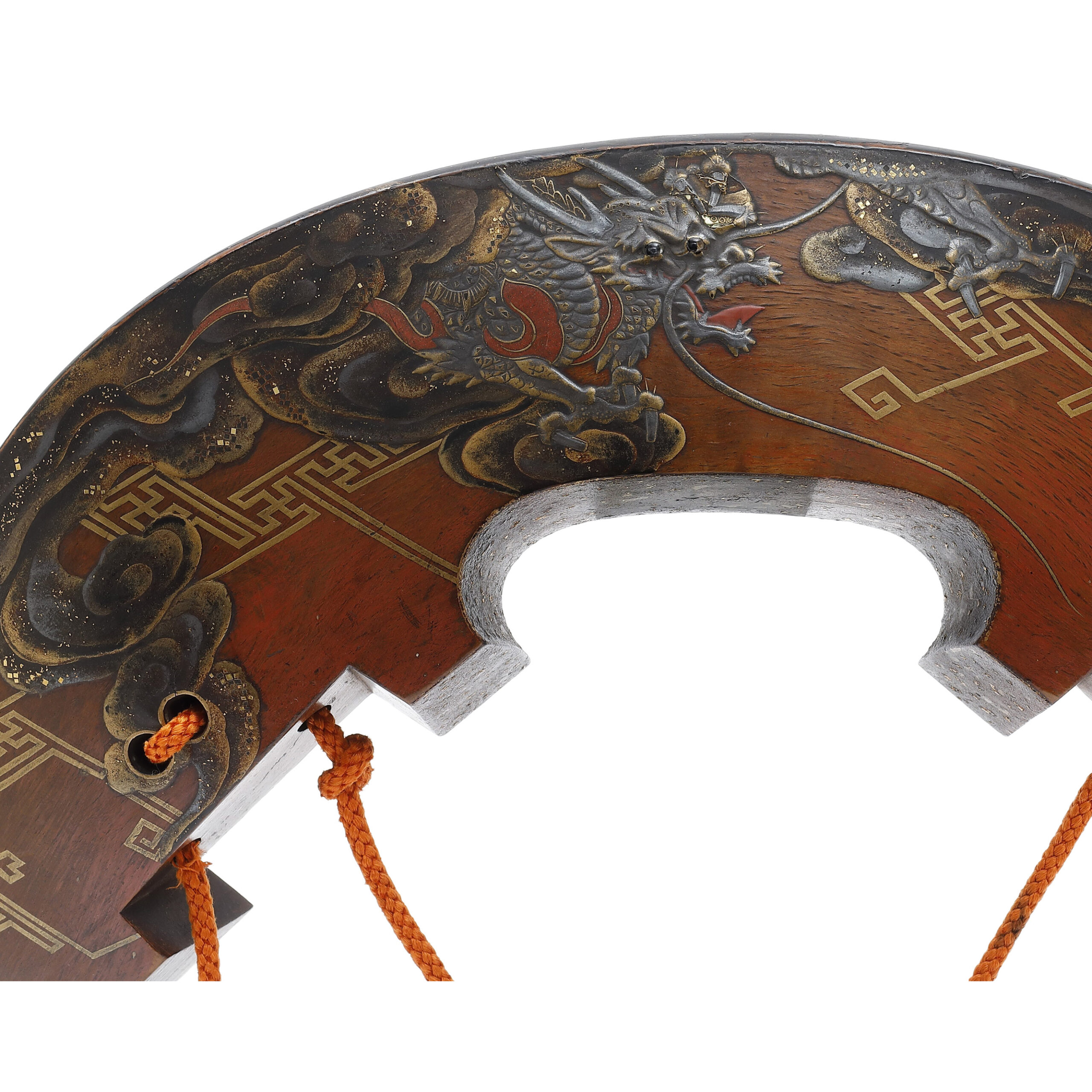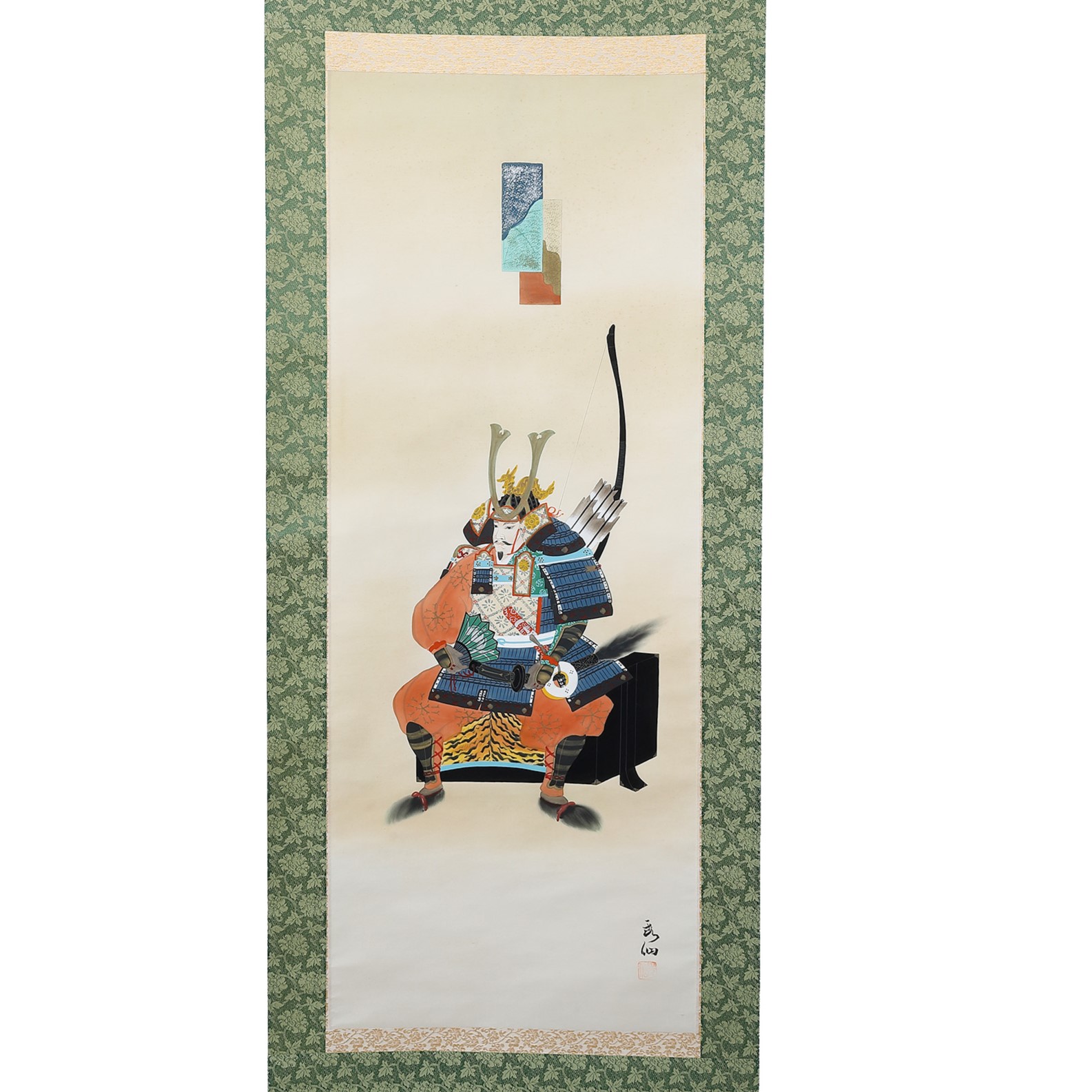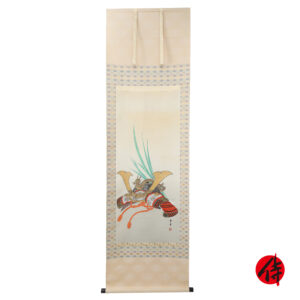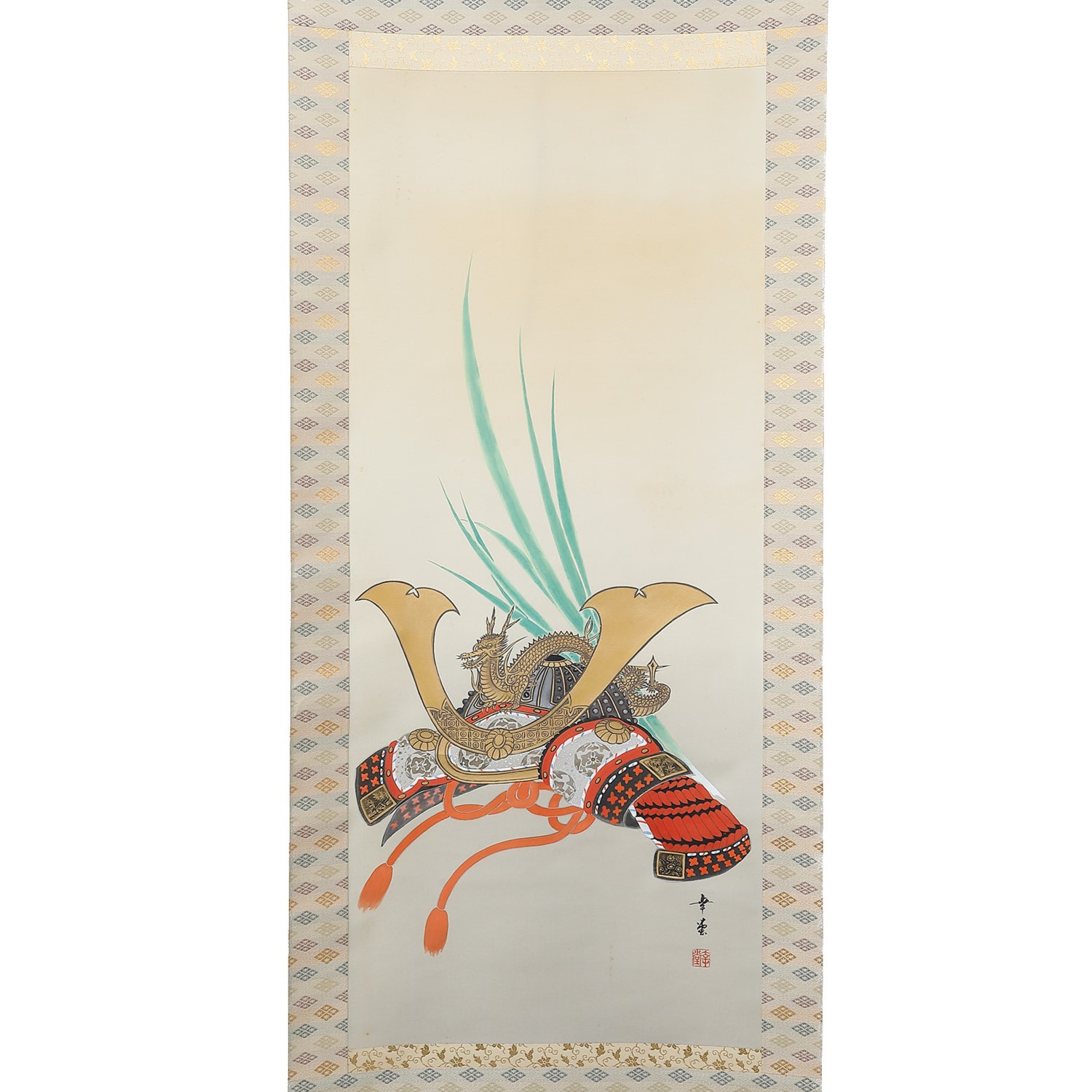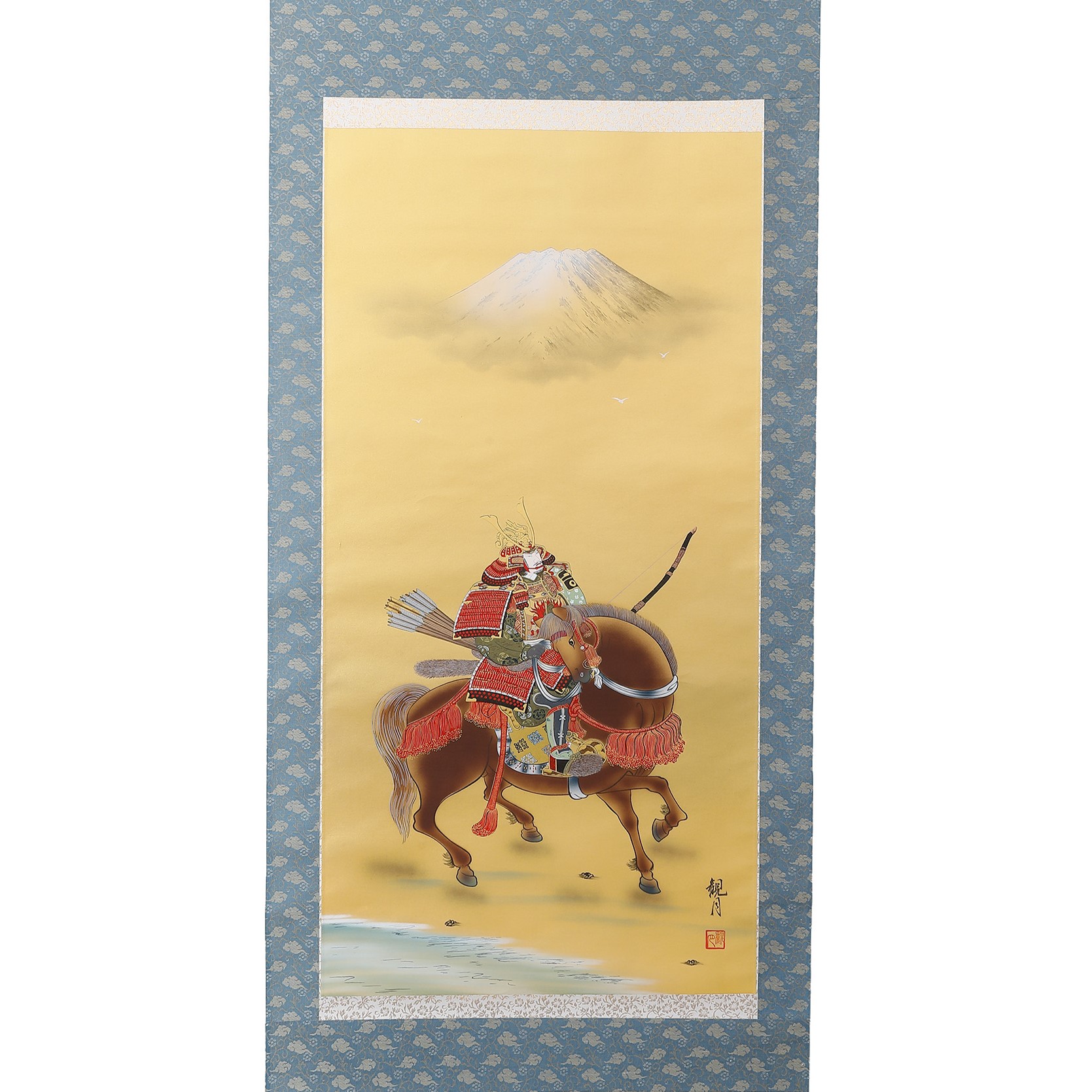Title: Gusoku Zu
Description
This item is a Kakejiku (掛軸, hanging scroll). When displaying a hanging scroll in a Japanese-style room, it is generally hung on the wall of the Tokonoma (床の間). However, no etiquette says you cannot hang a hanging scroll anywhere other than in Tokonoma or a Japanese-style room. You could enjoy them regardless of where you display them. You could also create an alcove-like space by simply hanging a scroll out of direct sunlight, laying tatami mats under it, and placing Japanese miscellaneous goods and flower arrangements. A Tokonoma is a space in a Japanese-style room where the floor is one step higher than the rest of the room. It was initially thought to be a place where gods resided and was created as a space for people of high status to sit. Since the Edo period, Tokonomas have been created in ordinary houses as a place for guests (high-status people) to sit, and it is considered the most sacred and noble place in a Japanese-style room. In recent years, it has often been set up as a space for art exhibitions, such as hanging scrolls and displaying flowers and ornaments.
Especially this hanging scroll seems to have been the one that was hung in the season of Tango no Sekku (端午の節句). The Tango-no Sekku (端午の節句) is one of the seasonal festivals and generally regarded as the Boy’s Festival. It is said that the Tango-no Sekku comes from the Continent. Since the Muromachi period (1336-1658), there has been a custom in which some kind of items, such as a hanging scroll depicting a Samurai or Samurai armors, were displayed in the hope of boys growing up well and succeeding.
Regarding the design, the figure of a Samurai armor set called Gusoku (具足) placed on a box called Yoroi Bitsu (鎧櫃, Samurai armor storage box) is depicted. The armor consists of several parts, and we would like to focus on some of them.
The protector for the head is called the Kabuto (兜, helmet). When people started using the Kabuto, it was initially designed for practical use, such as wearing it to turn the attack by swords and so on. However, the principal purpose of its design has changed with time; Samurais tried to express their dignity, personality, or religion by wearing the characteristic design Kabutos. Judging from its magnificent decoration, this Kabuto, which was allowed only for commanders, exudes the dignity of manhood and strength.
The face guard, which is one of the types of Menpo called the Ressei Menpo (烈勢面頬), is also attached. It represents the angry face to intimidate enemies. There are many types of Menpo, depending on their shape or appearance. The purpose of Menpo was not only to protect Samurai’s face. But also to hide their true faces so that their psychological states were unaffected. Beards are attached to this Menpo. Thanks to this effect, even a young soldier would have been able to produce the majestic appearance of a middle-aged Samurai.
The big sleeves are called the Ōsode (大袖). It is the part worn on the shoulder part to protect from the shoulder to the upper arm. In battle, arms must be protected to handle weapons. If the arms get injured, it is almost impossible to keep fighting or protect oneself. It was also used as a shield to defend enemy blades and arrows in emergencies as it is a component which is not glued to other parts. The Ōsode is composed of small leather and iron plates called the Kozane (小札), and those parts are bound together with beautiful silk threads, braided cords, leather cords, and other threads.
In addition, some motifs, such as Tsutsumori (筒守), Shippo (七宝), and Choji (丁子), from the Takaradukushi (宝尽くし) pattern, which is a pattern of a collection of auspicious objects, are designed on the left, right, upper and lower parts of this scroll. Some people believed these treasures would bring good fortune. Each item has a meaning. For example, the Tsutsumori is depicted as two scrolls crossed out, symbolizing a place of wisdom. The Shippo, whose ring spreads in all four directions, symbolizes the continuity of happiness. The Chouji (丁子, clove) is a plant, and it represents happy marriage, good health, and longevity. There are also other items in the Takaradukushi design. It would be enjoyable that find each motif and check its meaning.
Along with the gorgeous appearance of the armor, there is an atmosphere of bravery and dignity on this hanging scroll.
*As this item is an antique, please check each photo and ensure its condition.

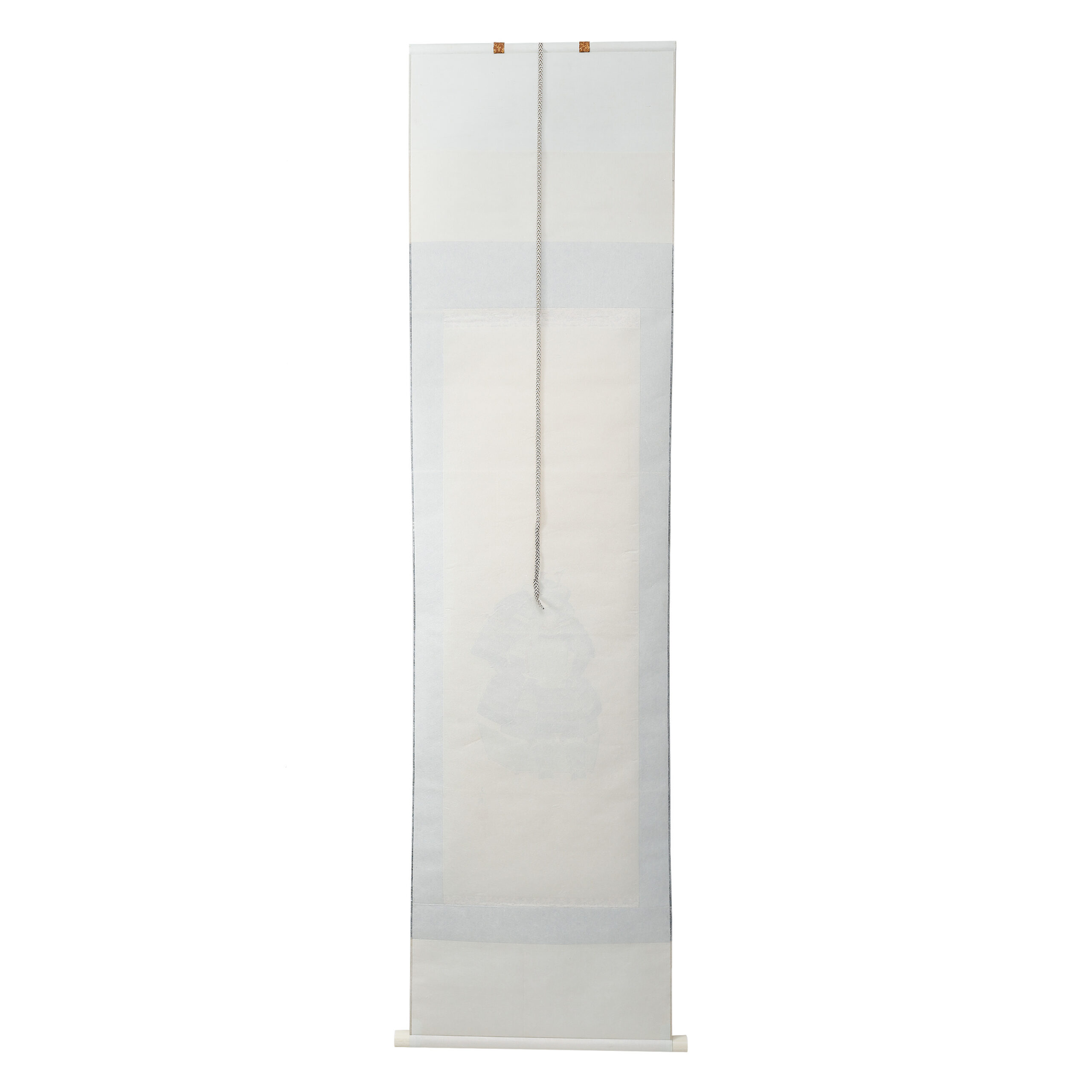
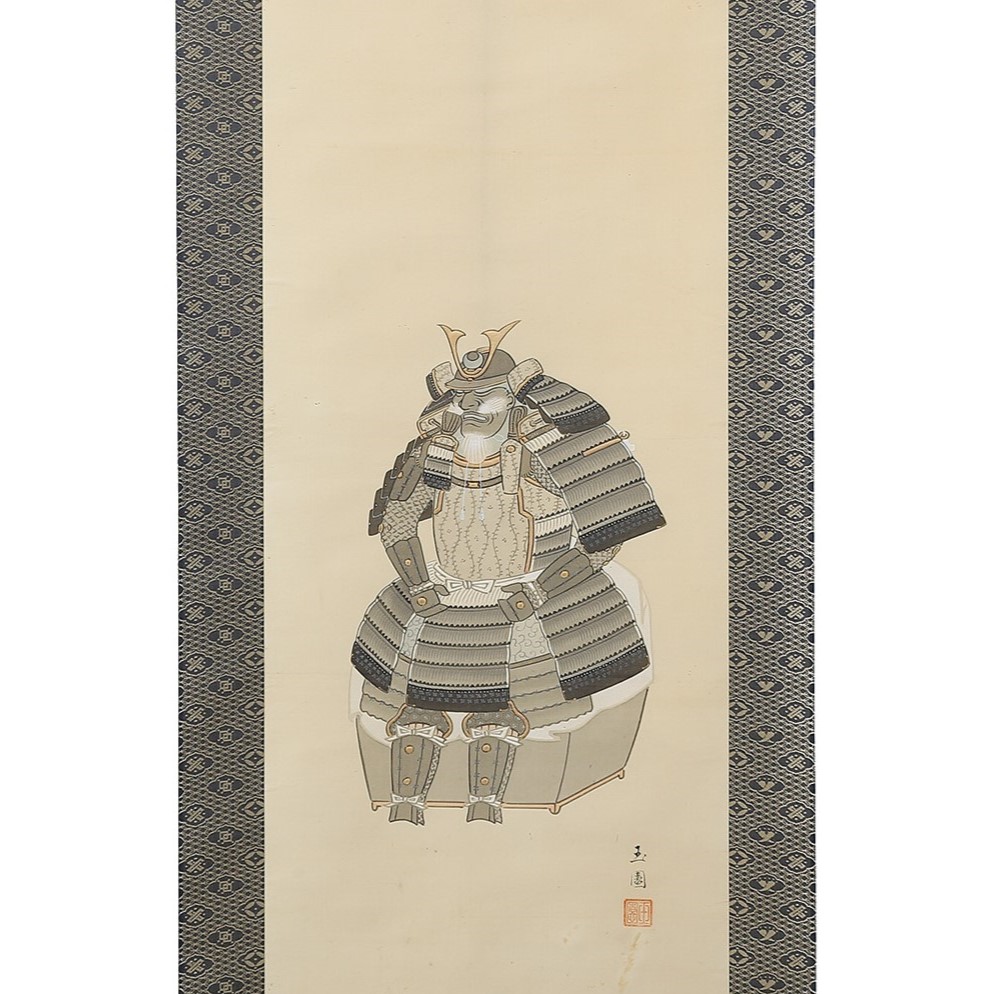
Example of how to decorate a hanging scroll
This image is an example of how to decorate a hanging scroll. Hanging scrolls are an interior decoration that could be enjoyed by changing them according to the seasons. We hope you find your favorite designed hanging scroll and enjoy decorating your room with your great collection.

【About us】
Samurai Museum is located in Tokyo, Japan, exhibiting antique artifacts related to the Samurai history. Samurai Museum Shop is the place for those who are interested in Japanese culture and craftsmanship. We deal with antique Samurai swords/armor, traditional crafts made in Japan and so on.
【Payment method】
We accept payment through Stripe (Credit card), PayPal, Apple Pay or ChromePay, all of which are secure payment methods. Also, you don’t need to make an account on Stripe for the checkout. If you prefer other payment method, please contact us. You may either pay in JPY, USD, AUD, CAD, EUR, CHF or GBP. The price is set in Japanese Yen. Prices in other currencies are automatically calculated based on the latest exchange rate.

【Shipping duration】
We normally ship via EMS (Express Mail Service) provided by Japan Post. It usually takes at least 5-14 days to deliver the package after you place an order. Time of delivery is estimated as accurately as possible by the carrier but does not take into account any delays beyond our control such as by inclement weather, post office holiday seasons.
We offer Free International Shipping as long as we can ship your order by EMS. If you prefer other shipping carriers, please contact us.
We will inform you of the order’s tracking number via email. Please make sure you fill out your valid email address correctly.
*If you like to make sure if EMS shipping is available to your country, please contact us.

【How to make sure the condition】
Please keep in mind that what you are going to purchase is an antique item. We uploaded high resolution photos for you to check its condition thoroughly. If you like to see more photos with different angles, please feel free to contact us. We will be happy to send them to you so that you can make informed decision.
It is essential for us to know that you are happy with your choice of antique item and we are prepared to use the best of our ability to serve you.
Would you like see some more antique items for sale? Please check the link below. We hope you can find your favorite item.
https://www.samuraimuseum.jp/shop/product-category/antique/

